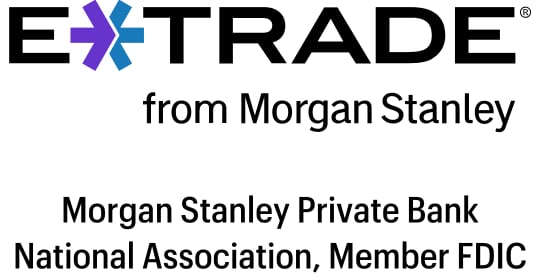Wire Transfer Fees: What Banks Charge
Banks typically charge for outgoing and incoming wire transfers. Fees range from $0 to more than $50.

Many, or all, of the products featured on this page are from our advertising partners who compensate us when you take certain actions on our website or click to take an action on their website. However, this does not influence our evaluations. Our opinions are our own. Here is a list of our partners and here's how we make money.
A wire transfer is an electronic method for moving money from one bank account to another. Both domestic and international wire transfers are available, though not all financial institutions offer them. Domestic wire transfers can be completed within the same day, while international wire transfers can take up to a few days.
Sending wire transfers can be an expensive way to move money from one bank account to another, with typical outgoing fees of $25 per transfer within the United States. But if you’re sending a lot of money or need a transfer to happen quickly, it may be a good option.
How much does a wire transfer cost?
Wire transfer fees generally range from $0 to about $50. The median wire transfer fee for the institutions we surveyed is $15 for incoming domestic wire transfers, $25 for outgoing domestic wire transfers, $15 for incoming international wire transfers and $45 for outgoing international wire transfers.
Many banks charge fees both for sending wire transfers (outgoing) and receiving them (incoming). Not all financial institutions offer wire transfers.

Member FDIC
Forbright Bank Growth Savings

4.25%
$0

Member FDIC
Axos ONE® Savings

4.66%
$1,500

Member FDIC
Varo Savings Account

5.00%
$0

Member FDIC
E*TRADE Premium Savings

4.00%
$0
Wire transfer fees by financial institution
This list only includes fees charged directly by banks and credit unions on their standard accounts (some premium accounts offer free wire transfers). If intermediary banks or a teller help process a wire transfer, an additional fee may be charged. You can send wire transfers within the U.S. and to other countries; international transfers usually cost more.
Here are the wire transfer fees for a few banks. You'll find more banks and their fees in the tables below.
Ally Bank Wire Transfer Fees
Incoming domestic: $0*.
Outgoing domestic: $20.
Incoming international: $0*.
Outgoing international: Not available.
Bank of America Wire Transfer Fees
Incoming domestic: $15.
Outgoing domestic: $30.
Incoming international: $15.
Outgoing international: $0 if sent in foreign currency; $45 if sent in U.S. dollars.
Chase Wire Transfer Fees
Incoming domestic: $15 ($0 if coming from Chase).
Outgoing domestic: $25 online; $35 in a branch.
Incoming international: $15 ($0 if coming from Chase).
Outgoing international: $5 if sent in foreign currency (or $0 for transfers of $5,000 or more); $40 (or $50, with banker assistance) if sent in U.S. dollars.
Wells Fargo Wire Transfer Fees
Incoming domestic: $15.
Outgoing domestic: $25; $40 in a branch.
Incoming international: $15.
Outgoing international: $0 if sent in foreign currency; $25 if sent in U.S. dollars; $40 in a branch for both U.S. dollars or foreign currency.
» Ready to send funds? Get the details on how to wire money
Note that Wells Fargo also offers a remittance transfer service called ExpressSend, which mainly works with Latin American and Asian countries. Only certain foreign banks participate.
Incoming/outgoing domestic wire transfer fees | Incoming/outgoing international wire transfer fees |
|---|---|
Incoming domestic: $0*. Outgoing domestic: $25. | Incoming international: $0*. Outgoing international: $50. |
Incoming domestic: $0*. Outgoing domestic: $30. | Incoming international: $0*. Outgoing international: Only available in-branch. |
Incoming domestic: $0*. Outgoing domestic: $25. | Incoming international: Not available. Outgoing international: Not available. |
Incoming domestic: $0*. Outgoing domestic: $30. | Incoming international: $0*. Outgoing international: $30. |
Incoming domestic: Not available. Outgoing domestic: $0*. | Incoming international: Not available. Outgoing international: Not available. |
Incoming domestic: $15. Outgoing domestic: $25. | Incoming international: $15. Outgoing international: $40. |
Incoming domestic: $0*. Outgoing domestic: $25. | Incoming international: Not available. Outgoing international: Not available. |
*Intermediaries: | |
Domestic vs. international fees
Domestic wire transfers tend to be cheaper and faster, since they can be completed through one payment system, such as that provided by the Federal Reserve. (Learn about the Fed's new service: What is FedNow?)
International bank wire transfers involve more parties, including a U.S. bank, a foreign bank and wire processing systems in both countries.
Additional costs for international wires
Banks charge other banks what’s called a midmarket — or interbank — rate for trading large amounts of foreign currency. But when banks convert money for consumers, they charge a higher markup. That markup is a percentage of the amount being sent. You can see how much more your bank is charging you above the midmarket rate by comparing rates on currency platforms such as Bloomberg or Reuters.
If your bank doesn’t convert your money for an international money transfer, then a foreign bank will do it and usually charge its own markup. The best way to avoid high markups is to consider using a nonbank option. (Compare international money transfer providers.)
Other ways to cut wire-transfer costs
Fees can differ based on how you initiate the wire transfer: Doing it yourself online tends to be the cheapest way. Requesting the transfer at a branch or on the phone can add $10 or more to your fee. The Chase wire transfer fee, for instance, is $35 for domestic wire transfers set up for you by a banker and $25 for the same transfer if you do it yourself online.
Transfers sent in foreign currency can be cheaper: Some banks offer lower fees if you let them convert U.S. dollars into a foreign currency before transferring the funds rather than simply sending U.S. dollars abroad.
Recurring wires can be slightly cheaper: Some financial institutions, like Comerica, let you send a recurring wire transfer for a few dollars less per transfer. To save money on recurring transfers, though, using your bank’s bill pay or other transfer service is a better and cheaper option unless the transfer amount exceeds the maximum allowed by your bank. Wire transfers can handle larger amounts.
Cheaper ways to send money
Bank wire transfers aren't the only way to send money. For transfers within the U.S. to friends and family, consider Venmo or Cash App, and other nonbank providers that charge fewer fees. If you need to send money abroad, look for money transfer service providers that offer better exchange rates, such as Wise, Xoom and others listed in our roundup of the best ways to send money internationally. Note that these methods each have limitations to how much you can send.
METHODOLOGY
We looked at nearly 40 financial institutions: the largest U.S. banks based on assets, debit card volume and internet search traffic; the nation’s largest credit unions with broad-based membership requirements; and other notable and/or emerging players in the industry. For calculating medians, financial institutions that don't provide domestic or international outgoing wire transfers were excluded from the relevant fee category. If there were two or more fees for a certain type of wire transfer, we chose the price that would apply to standard checking accounts. In the case of international wire transfers with different fees based on currency conversion or processing, we averaged each bank's fees first.
Details on how data for the chart was gathered: These are standard fees for one-time wire transfers based on each financial institution’s disclosures and policies. If there are multiple ways to perform a wire transfer, the price of the cheapest way, which is usually through online banking, is shown. If a bank asked for a ZIP code, we used the ZIP code for the bank's headquarters and compared with ZIP codes in different states to check for variations.












